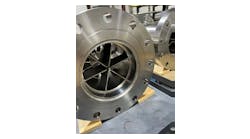The U.S. National Association of Clean Water Agencies (NACWA, www.nacwa.org) issued a response to a recent series by the Associated Press (www.ap.org) on pharmaceuticals found in municipal drinking water systems, arguing the findings demonstrate the need for a national strategy to manage the use and disposal of such compounds.
According to NACWA, while the presence of pharmaceutical compounds in U.S. waterways is not new, sophisticated new technologies have been developed that can detect concentrations measured at levels of parts per billion or parts per trillion, and the agency argues that such technologies should be employed in order to mitigate any potential dangers such chemical compounds may present to drinking water supplies in the future.
The NACWA published a white paper in 2005 that issue of pharmaceuticals and personal care products (PPCPs) in the environment, detailing the scope of the problem and possible solutions. In addition, NACWA and its water sector partners have several efforts underway to shed light on this issue, including:
* The establishment of a national strategy to address the issue of PPCPs that make their way into the aquatic environment, accounting for the fact that while concentrations detected in public drinking water are miniscule, the public’s concerns must be addressed.
* A partnership with the Product Stewardship Institute (www.productstewardship.us) on a national dialogue to develop an approach for managing the disposal of unused pharmaceuticals.
* The development of pharmaceutical take-back programs intended to keep these compounds out of the environment altogether, resulting in the collection of significant quantities of unused medications.
* Support for increased funding for research into the potential aquatic and human-health impacts from long-term exposure to trace concentrations of these contaminants.
The NACWA also note that millions of dollars are already being spent to look at the impacts from these contaminants on U.S. drinking water supplies. These funds support projects being conducted by the EPA (www.epa.gov), the Water Environment Research Foundation (www.werf.org), and the U.S. Geological Survey (www.usgs.gov).

